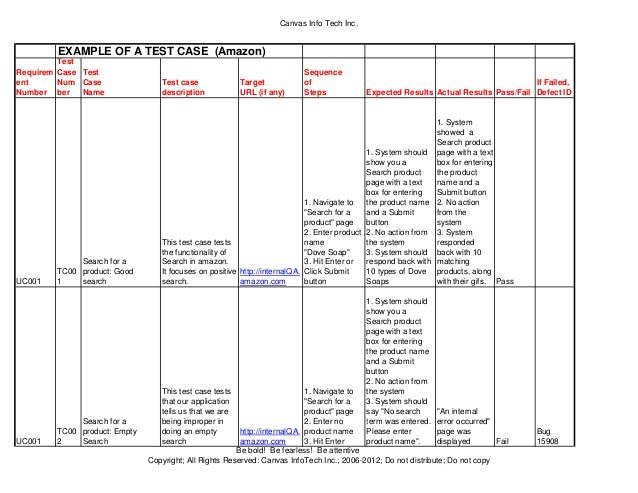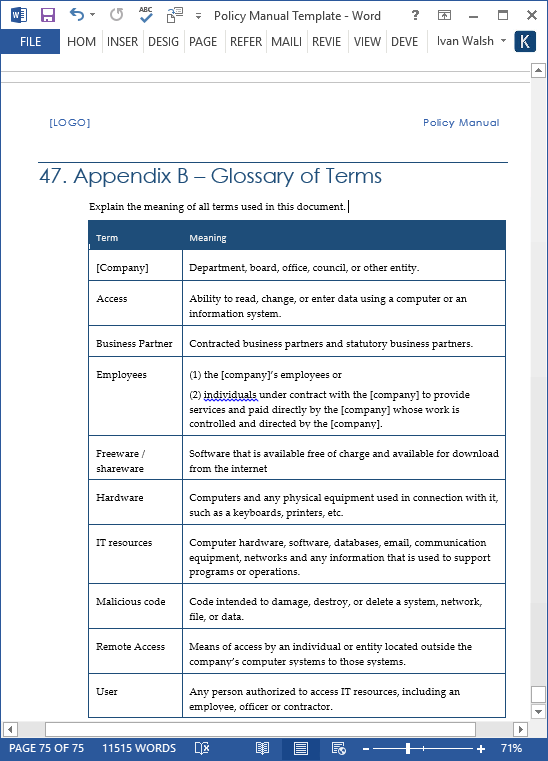
Test Case Template and Examples Software Engineering – Dr Ghazy Assassa Page 2 of 5. This Video explains TEST Case Specification Template (IEEE 829 Format) for GMO Post Sample Website. Sample Test Case document in Excel and Word format: http. Jul 03, 2019 Download Manual Test Case Template Example Creating manual test scripts is a time-consuming effort that can be quite a tedious process. To avoid this hassle, TestProject just released a feature that can help you create manual test case templates on the fly, that are ready to be used for manual execution!
Internal Test Case Excel Format Template Free Download. Nstl.com The internal test case excel format template free download is a simple and normal looking sample test case template that stores the information on the test case, the purpose, the criteria, and overall result. 6 Sample Test Case Template Excel. Thursday, March 15th 2018. Excel Templates. Heat Map Excel TemplateSample Test Case Template Excel. SAP Test ScriptSample Test Case Template Excel. Free Sample,Example & Format Sample Test Case Template Excel knfke. Visual Studio 2015 Web Based Test Case Management with TFSSample Test Case Template Excel.
Sample Use Case



Use Case ID: | Enter a unique numeric identifier for the Use Case. e.g. UC-1.2.1 | |||
Use Case Name: | Enter a short name for the Use Case using an active verb phrase. e.g. Withdraw Cash | |||
Created By: | Last Updated By: | |||
Date Created: | Last Revision Date: | |||
Actors: | [An actor is a person or other entity external to the software system being specified who interacts with the system and performs use cases to accomplish tasks. Different actors often correspond to different user classes, or roles, identified from the customer community that will use the product. Name the actor that will be initiating this use case (primary) and any other actors who will participate in completing the use case (secondary).] | |||
Description: | [Provide a brief description of the reason for and outcome of this use case.] | |||
Trigger: | [Identify the event that initiates the use case. This could be an external business event or system event that causes the use case to begin, or it could be the first step in the normal flow.] | |||
Preconditions: | [List any activities that must take place, or any conditions that must be true, before the use case can be started. Number each pre-condition. e.g.
| |||
Postconditions: | [Describe the state of the system at the conclusion of the use case execution. Should include both minimal guarantees (what must happen even if the actor’s goal is not achieved) and the success guarantees (what happens when the actor’s goal is achieved. Number each post-condition. e.g.
| |||
Normal Flow: | [Provide a detailed description of the user actions and system responses that will take place during execution of the use case under normal, expected conditions. This dialog sequence will ultimately lead to accomplishing the goal stated in the use case name and description.
| |||
Alternative Flows: [Alternative Flow 1 – Not in Network] | [Document legitimate branches from the main flow to handle special conditions (also known as extensions). For each alternative flow reference the branching step number of the normal flow and the condition which must be true in order for this extension to be executed. e.g. Alternative flows in the Withdraw Cash transaction: 4a. In step 4 of the normal flow, if the customer is not in the bank network
4b. In step 4 of the normal flow, if the customer is not in the bank network
Note: Insert a new row for each distinctive alternative flow. ] | |||
Exceptions: | [Describe any anticipated error conditions that could occur during execution of the use case, and define how the system is to respond to those conditions. e.g. Exceptions to the Withdraw Case transaction
| |||
Includes: | [List any other use cases that are included (“called”) by this use case. Common functionality that appears in multiple use cases can be split out into a separate use case that is included by the ones that need that common functionality. e.g. steps 1-4 in the normal flow would be required for all types of ATM transactions- a Use Case could be written for these steps and “included” in all ATM Use Cases.] | |||
Frequency of Use: | [How often will this Use Case be executed. This information is primarily useful for designers. e.g. enter values such as 50 per hour, 200 per day, once a week, once a year, on demand etc.] | |||
Special Requirements: | [Identify any additional requirements, such as nonfunctional requirements, for the use case that may need to be addressed during design or implementation. These may include performance requirements or other quality attributes.] | |||
Assumptions: | [List any assumptions that were made in the analysis that led to accepting this use case into the product description and writing the use case description. e.g. For the Withdraw Cash Use Case, an assumption could be: | |||
Notes and Issues: | [List any additional comments about this use case or any remaining open issues or TBDs (To Be Determined) that must be resolved. e.g.
| |||